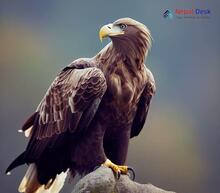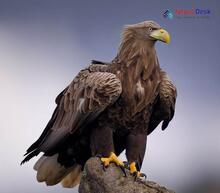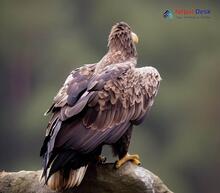The Haliaeetus genus, commonly recognized as the sea eagles, is a fascinating group of birds that hold a special place in the hearts of birdwatchers, ecologists, and nature enthusiasts alike. These majestic creatures can be found across various parts of the world, including Nepal. In this article, we will delve into the intricate aspects of their evolution tree, taxonomy, morphology, ecology, and presence in Nepal.
Evolution Tree: Tracing the Roots
The Haliaeetus genus is part of the Accipitridae family and is believed to have originated approximately 25 to 30 million years ago. The evolution tree of these raptors shares a common ancestor with kites and Old World vultures. Studies on their genetic relationships reveal that the ancestors of these phenomenal birds likely radiated across different environments, leading to diversification in form and habitat use.
Taxonomy: Classifying the Magnificent Sea Eagles
The Haliaeetus genus comprises eight recognized species that exhibit diverse characteristics. Some notable members within this genus include:
1. Haliaeetus leucocephalus - Bald Eagle
2. Haliaeetus albicilla - White-tailed Eagle
3. Haliaeetus pelagicus - Steller's Sea Eagle
4. Haliaeetus leucoryphus - Pallas's Fish Eagle
5. Haliaeetus humilis - Lesser Fish Eagle
6. Haliaeetus vocifer - African Fish Eagle
7. Haliaeetus sanfordi - Sanford's Sea Eagle
8. Haliaeetus ichthyaetus - Grey-headed Fish Eagle
Morphology: Recognizing the Physical Traits
Sea eagles are renowned for their striking appearance and powerful build. Generally large-sized birds with broad wings, Haliaeetus species exhibit an array of unique morphological features. Their hooked beak is designed for tearing flesh, and their strong talons are perfect for grasping prey. One distinctive attribute is the presence of a prominent forehead and the flat appearance of their heads when compared to other raptors.
Ecology: Adapting to the Environment
Haliaeetus species inhabit aquatic environments such as lakes, rivers, and coastlines. They predominantly feed on fish but are also known to scavenge and prey on small mammals, birds, and reptiles. Nesting habits vary depending on specific populations; some sea eagles construct enormous nests in trees or cliffs, while others use ground vegetation.
Presence in Nepal: Sightings in a Biodiversity Hotspot
The diverse landscapes and rich ecosystems of Nepal serve as a haven for many bird species. The Grey-headed Fish Eagle (Haliaeetus ichthyaetus) makes its home within the region. This striking eagle can be found residing near water bodies at lower altitudes in Nepal's Terai region. Their presence serves as an indicator of healthy aquatic ecosystems and affirms the significance of these birds in biodiversity conservation efforts.
In essence, the Haliaeetus genus is a captivating showcase of evolution, taxonomy, morphology, and ecology intricacies that ignite curiosity in both seasoned bird enthusiasts and casual observers. The presence of these resplendent birds in Nepal further emphasizes the importance of preserving our environment while also celebrating the marvels of these outstanding creatures.




